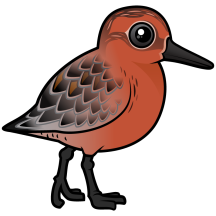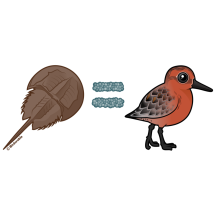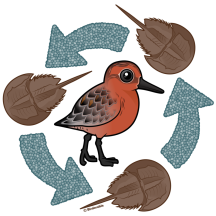The Red Knot is a long-distant migrant shorebird. They breed in the tundra of northern Canada, Europe, and Russia. After breeding, most Red Knots migrate to wintering grounds on the coasts of Africa, South America, and Australia.
Due to their epic migration, Red Knots feed on a wide variety of foods depending on the time of year and their location. On their tundra breeding grounds, they feed on insects and larvae, while small mollusks are a common food at other times of year. Red Knots in the Americas famously depend on the spawning of horseshoe crabs across parts of eastern North America (especially Delaware Bay) during their northward migration. The birds fuel up on the eggs; the Red Knot's threatened status is tied to excessive crab harvesting by humans.
Added to Birdorable
Hatched November 22, 2011
Measurements
Length:
9 to 10 inches
(22.9 to 25.4 cm)
Wingspan:
18.5 to 21 inches
(47 to 53.3 cm)
Brazilian (Português brasileiro)
Maçarico-de-papo-vermelho






































